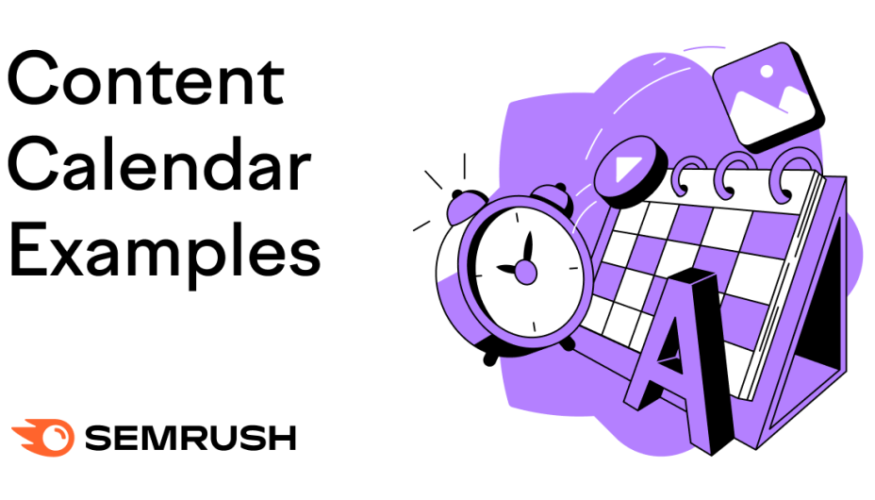[ad_1]
Businesses use content calendars to plan, publish and track their content over time. You’ll have plenty of options to consider when creating or updating your own content calendar.
You can also use the content calendar templates below to manage your content production efficiently.
What Is A Content Calendar?
A content calendar is any type of document used to plan the design, creation, and publication of digital content.
“Content calendar” may be used to refer to all types of content plans developed for blogs, social media, and editorial teams. Content calendars are available in different formats like spreadsheets, a calendar app, or a third-party content tool.
For a more in-depth guide, check out our guide to creating your own content calendar.
Why Do You Need A Content Calendar?
You can use your content calendar to plan content weeks, months, or a year for your different marketing channels.
Having a content calendar for your business can:
- Produce better content: Creating and publishing content from a defined plan gives you more time to develop and create each piece of content.
- Increase time efficiency: You’ll have timelines and deadlines set for the content creation process, which keeps your stakeholders on task.
- Help manage resources: Once you know what content to create, you can determine which designers, content writers, etc., you’ll need to publish your content.
- Align team members: Your stakeholders will know what to complete and how to collaborate best to meet deadlines.
- Clarify responsibilities within your team: Content planning outlines who will be responsible for each part of the creation process.
- Assist with reporting: You can use your content calendar to schedule when to review your content’s engagement rate over time. You’ll be able to understand better how your content performs.
- Keep marketing messaging consistent: Planning your content makes it easier to keep your messaging consistent across your platforms.
How To Create A Content Calendar
When creating your content calendar, you’ll need to start by selecting a layout that makes sense to you and your team.
Your content calendar should address your:
Timeframe
You’ll need to determine how far in advance you want to plan your content. It’s common for businesses to plan content over the month, quarter, or year.
You might find it more manageable to plan content over the month or quarter. This gives you enough time to research and develop detailed content.
Marketing Channels
Specify what channels your content will live on within your timeframe. Your calendar can help you distribute your content consistently and evenly across your marketing channels, enabling you to maintain contact with your audience.
You’ll also know to tailor your content to each marketing channel. Don’t forget to include all of the different channels your company uses, including:
- Blogs and website content
- Social media channels
- Email sends
- Print marketing
- SEO
- PPC
Topics
Map out any relevant topics you can reference in your content. Try to stick to issues that are useful to your audience and consistent with your brand messaging.
You can use the Topic Research tool to find potential topics for your content calendar. Enter your target keywords into the tool, and it returns popular topics with SEO potential that you can turn into blog or social media posts.
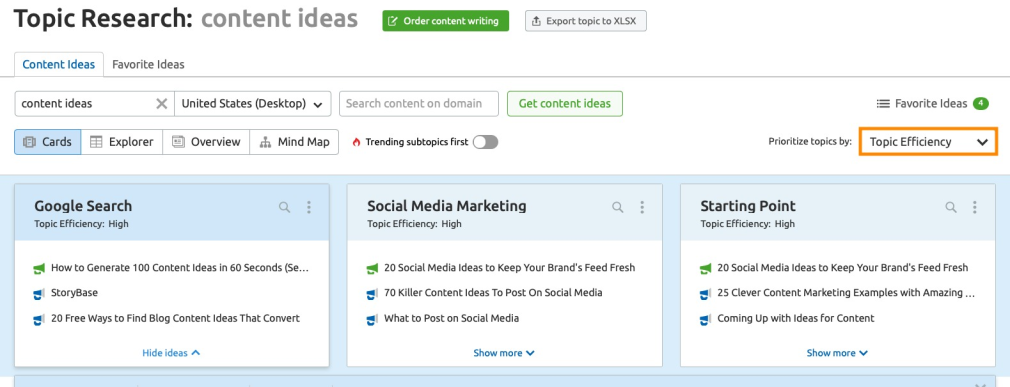
Find Out What Ranks
with the Topic Research Tool

Events
Be sure to plan for any holidays or special events that occur during the set period. You may not create content about each holiday, but keeping track of them can help you schedule your posts more intentionally.
Be sure to note any:
- National Holidays
- Peak buying seasons
- One-off and recurring events
Schedule
How often are you able to post content? Your frequency should be often enough to keep your audience engaged, but not so much so that you overwhelm them with content.
Assign each post a publication date and time. You can use your content calendar to keep track of these posts, so you can quickly review how often you post daily or weekly.
If you’re new to sharing content, it’s common to publish a handful of content pieces every month. As you grow as a business, your content output should increase too.
When Is The Best Time To Post On Social Media?
You may need to test schedules to find a frequency that works best for you. As a guide, CoSchedule recommends publishing on:
- Facebook: once between 1-2 pm
- Twitter: 15 times between 2 am and 10 pm
- LinkedIn: once post a day between 10-11 am
- Instagram: once or twice a day between 8 am and 2 pm
You can use social scheduling tools like the Social Media Poster to build, schedule, and track your posts without logging into your accounts. The Social Media Poster tool currently integrates with Facebook, Instagram, Twitter, Pinterest, and more.
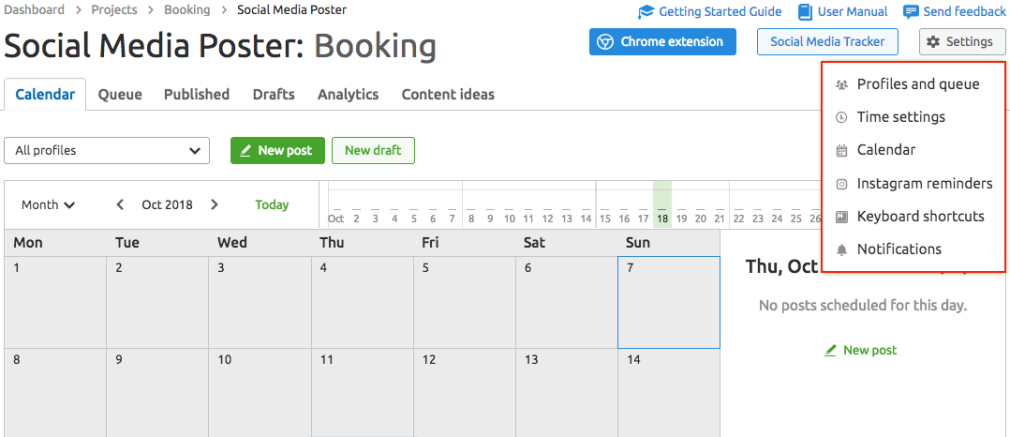
When To Send An Email
According to Wordstream, Tuesdays, Wednesdays, and Thursdays are the best days to send an email. These days perform well because people are often too busy on Mondays and weekends to read their emails.
Of course, you will need to tailor your schedule to the dates and times that work best for your customers. Aim for times during the day when your customers are more likely to open your email.
H4. How Often Should You Update Your Blog?
Ideally, it’s helpful to publish a new blog post once a week. You can always work your way up if you don’t have dedicated time or a team to help you develop your blog content.
According to Blog Tyrant, the best time to publish a blog is 7-9 am on Monday or Thursday. Be prepared to test different days and times to find what works best for you.
3 Content Calendar Examples
If you need inspiration or a quick calendar template to get started, try our:
- Blog Content Calendar Template
- Email Marketing Calendar Template
- Social Media Content Calendar Template
Blog Content Calendar Template
Use this template to plan out your blog content weeks, months, or a year in the future. We designed it to help you brief your content writers or team to publish successful, targeted content on time.
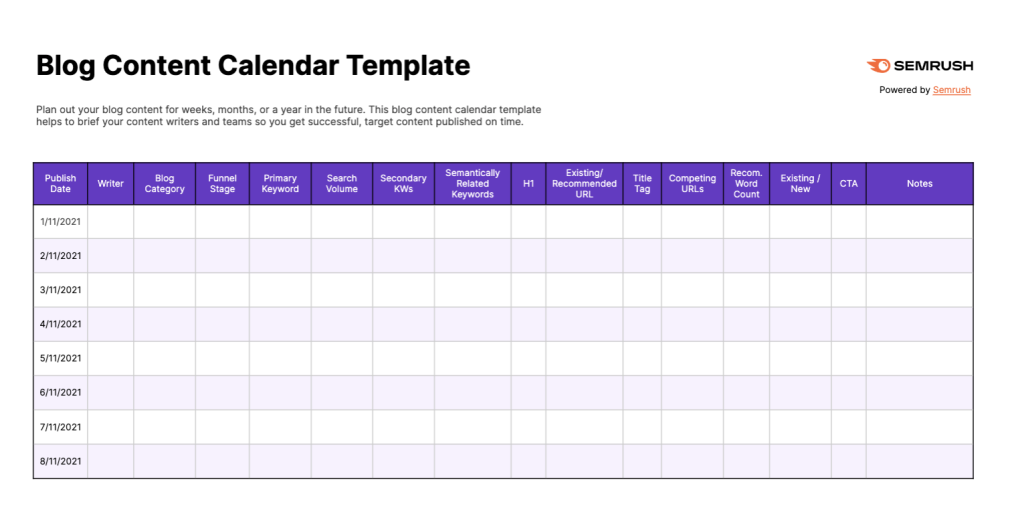
This template includes essential information like recommended URL, H1, and title tag. We also added keyword categories, so you can later track how well your content performs organically for your targeted keywords.
You can access the blog content calendar template here.
Email Marketing Calendar Template
Use the email marketing calendar template to plan your emails before you send them. You’ll have a high-level view of any market segments, product features, offers, and more.
Grab the email marketing calendar template here.
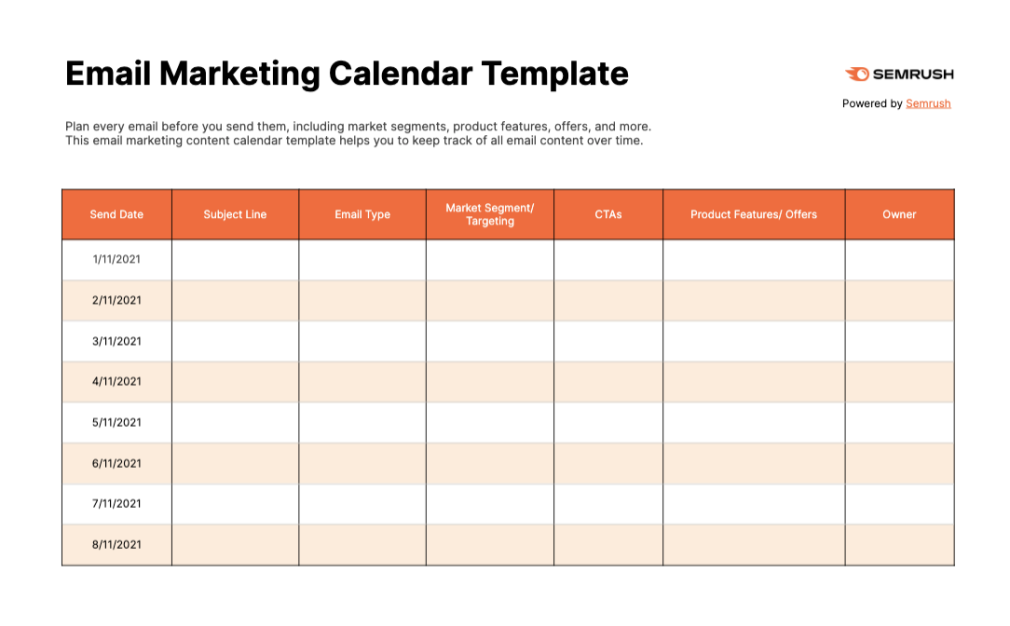
Social Media Editorial Calendar Template
This template can help you keep track of all your social media content across platforms.
You’ll also have space to plan out key dates and events in your calendar, like international events or holidays.
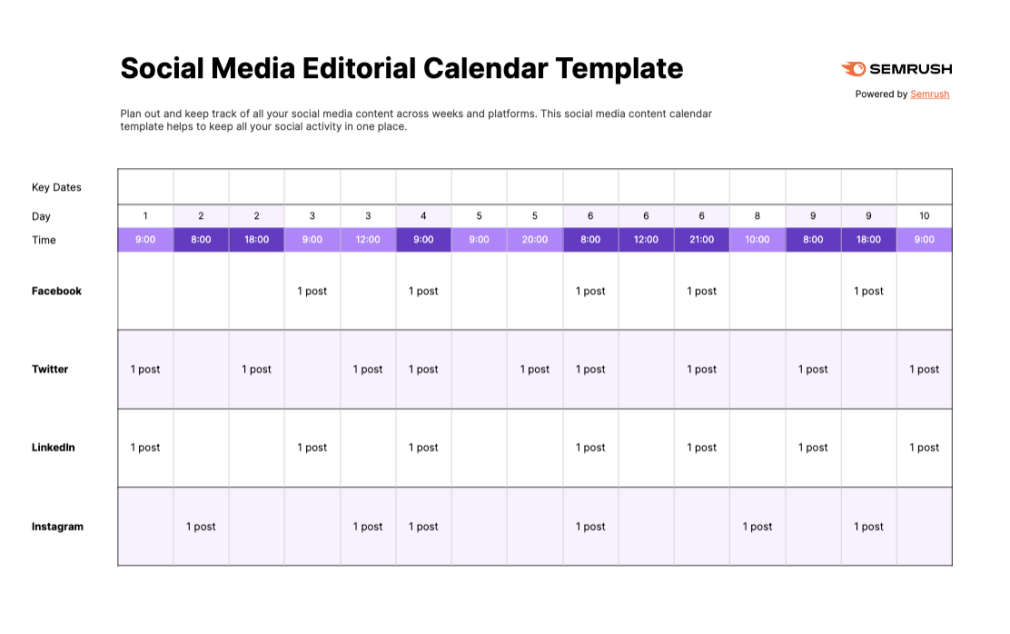
Grab the social media calendar template here.
Check out our guide to creating a social media calendar to learn more about its benefits.
Managing Your Content Calendar
Your content calendar should be the most accurate reflection of all of your content. Ideally, you or your team should review your calendar to understand how, when, and where your content is shared.
You can also use a third-party marketing calendar tool to keep things on track. We offer the Marketing Calendar to help businesses plan and track their content with ease.
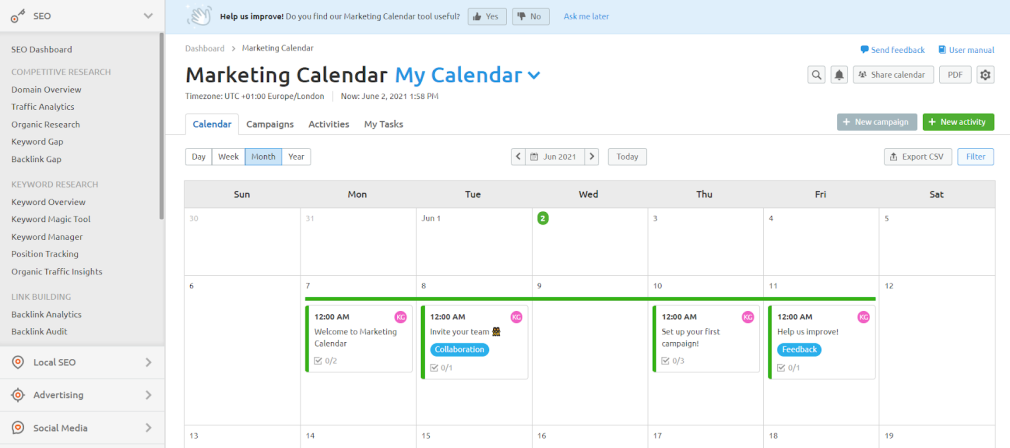
-
Collaborate in real-time You can invite users to collaborate on your marketing in real-time. Members can comment and tag others.
-
Review calendar history
Track changes with the calendar history or monitor tasks as they’re completed.
-
Analyze performance
With the Google Analytics integration, you can track your content’s performance with UTM tags.
-
Plan for multiple channels
Use the Marketing Calendar to review all of your marketing channels, so you’ll always know what’s to be published.
Creating Content Calendars Helps Organize Your Strategy
Try out the templates to get started with creating your content calendar today! Once you’ve customized your calendar to your needs, be sure to maintain it for accuracy. With dedicated effort, you may see a positive effect on your audience growth and engagement.
[ad_2]
Source link

